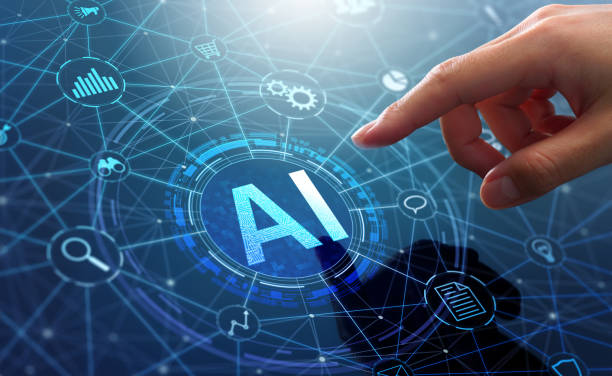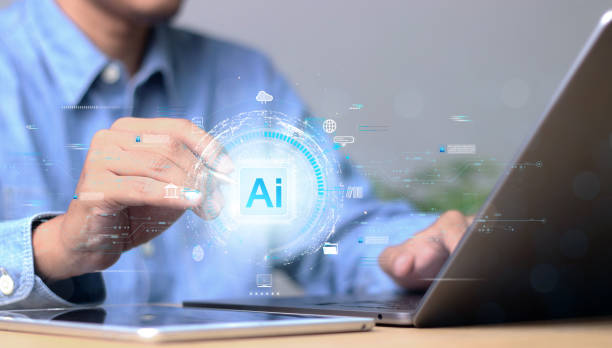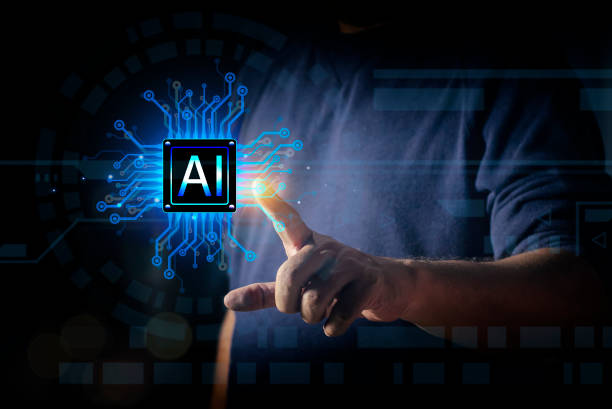What is an AI robot? A comprehensive definition

What is an AI robot? A comprehensive definition
An Artificial Intelligence Robot (AI Robot) is an intelligent entity formed by combining two distinct fields: robotics and artificial intelligence.
In other words, these robots not only have the ability to perform physical tasks but can also process data, make decisions, and adapt their behaviors based on environmental conditions using advanced algorithms.
Artificial intelligence enables the robot to learn, reason, and solve complex problems.
These robots typically use sensors to receive information from the outside world and actuators to apply changes in the environment.
AI robots are used in various industries, including manufacturing, healthcare, logistics, and customer services.
For a better understanding, consider industrial robots that perform repetitive tasks.
If these robots are equipped with artificial intelligence, they can automatically perform more complex tasks, adapt to environmental changes, and even solve problems.
Artificial intelligence helps these robots understand and interact with the world.
Do you know that customers’ first impression of your company is your website? Multiply your business credibility with a powerful corporate website from Rasawwb!
✅ Custom and eye-catching design tailored to your brand
✅ Improved user experience and increased customer attraction
⚡ Get free consultation!
Main components of an AI robot

Main components of an AI robot
An artificial intelligence robot consists of several key components that work together to enable its intelligent performance.
These components include:
- Sensors Sensors collect environmental information.
There are different types of sensors, including cameras, microphones, temperature sensors, pressure sensors, and proximity sensors.
These sensors enable the AI robot to understand its surroundings. - Actuators Actuators are responsible for performing physical actions.
These actuators can include motors, robotic arms, wheels, and other motion mechanisms.
Actuators enable the AI robot to interact with the environment. - Processor The processor is the brain of the AI robot.
This section processes the information collected by the sensors and makes the necessary decisions.
Processors typically use powerful computer processors and complex artificial intelligence algorithms. - AI Software AI software includes machine learning algorithms and models that enable the AI robot to learn, reason, and solve problems.
This software is usually developed using programming languages such as Python and Java. - Power Source The power source provides the necessary energy for the AI robot to function.
This power source can include batteries, solar cells, or an external power supply.
These components, working together, enable an AI robot to perform various tasks automatically and interact with its environment.
The Robotics Organization provides more information about robot components.
Types of AI robots based on application
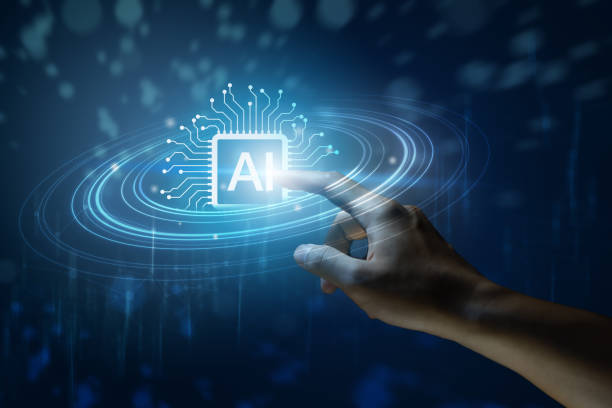
Types of AI robots based on application
AI robots have different types based on the application for which they are designed.
Some of the most common types of these robots include:
- Industrial Robots These robots are used in factory production lines to perform repetitive and heavy tasks.
They can perform welding, painting, assembly of parts, and packaging of products. - Service Robots These robots are designed to provide services to humans.
They can be used in hospitals, hotels, restaurants, and homes.
Service robots can perform tasks such as transportation, cleaning, elderly care, and providing information. - Medical Robots These robots are used in surgery, rehabilitation, and patient care.
They can perform precise and complex surgeries, assist patients in rehabilitation exercises, and automatically dispense medications. - Military Robots These robots are used in military operations to perform dangerous and difficult tasks.
They can perform reconnaissance, bomb disposal, and equipment transportation. - Space Robots These robots are designed for space exploration and scientific research in harsh space conditions.
They can collect soil and rock samples from planets, repair and maintain space equipment, and build space structures.
Each of these types of AI robots has its own specific features and capabilities that make them suitable for performing specific tasks.
Continuous advancements in artificial intelligence and robotics lead to the development of more advanced and efficient robots.
NASA uses space robots for Mars exploration.
| Robot Type | Application |
|---|---|
| Industrial Robot | Production Lines |
| Service Robot | Providing Services to Humans |
| Medical Robot | Surgery and Care |
Advantages of using AI robots
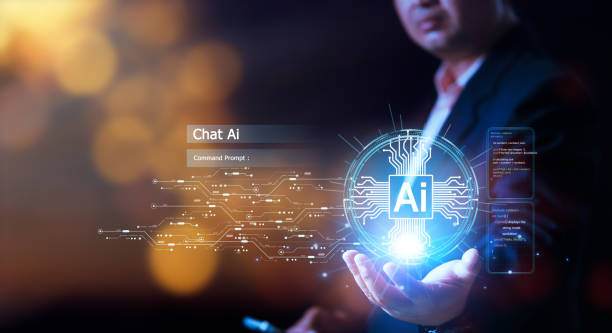
Advantages of using AI robots
The use of AI robots has many advantages that have led to the rapid expansion of this technology in various industries.
Some of the most important of these advantages include:
- Increased Productivity AI robots can perform tasks faster and more accurately than humans.
They can work around the clock and do not need rest.
This leads to a significant increase in productivity. - Reduced Costs Although the initial investment for purchasing and implementing AI robots may be high, in the long run, these robots can significantly reduce costs.
They eliminate the need for salaries, insurance, and employee benefits. - Improved Safety AI robots can perform dangerous and high-risk tasks instead of humans.
This leads to a reduction in accidents and occupational injuries. - Increased Quality AI robots can perform tasks with greater precision and consistency than humans.
This leads to an increase in the quality of products and services. - Performing Complex Tasks AI robots can perform complex and specialized tasks that are difficult or impossible for humans.
In general, using AI robots can help companies increase their efficiency, reduce costs, improve safety, increase quality, and perform complex tasks.
Automation.com provides news and information about automation and robotics.
Are you tired of your e-commerce website not generating as much revenue as its potential? Rasawwb, specializing in professional e-commerce website design, solves this problem forever!
✅ Increased sales rate and revenue
✅ High loading speed and excellent user experience
⚡ Get free e-commerce website design consultation!
Challenges in the development of AI robots
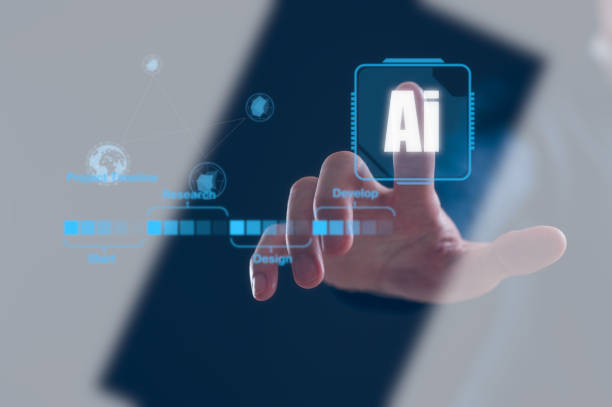
Challenges in the development of AI robots
Despite numerous advantages, the development and use of AI robots also come with challenges.
Some of these challenges include:
- High Cost The cost of purchasing, implementing, and maintaining AI robots can be very high.
This makes the use of this technology impossible for many companies and organizations. - Technical Complexity The development and maintenance of AI robots require high technical knowledge and expertise.
This causes companies and organizations to face difficulties in implementing and using this technology. - Ethical Concerns The use of AI robots can raise ethical concerns.
For example, questions arise regarding the accountability of robots in case of errors, the impact of robots on employment, and the protection of information privacy. - Technical Limitations AI robots still have limitations in some areas.
For example, they cannot fully understand human emotions and may make wrong decisions in some situations. - Need for Infrastructure Changes The use of AI robots may require fundamental changes in existing infrastructures.
For example, there may be a need for upgrading communication networks, changing factory layouts, and training the workforce.
Addressing these challenges requires a collaborative effort from researchers, engineers, policymakers, and ethicists.
IEEE Ethics is a good resource for more information on ethics in technology.
What are the predictions for the future of AI robots?

What are the predictions for the future of AI robots?
The future of AI robots looks very bright and promising.
Continuous advancements in artificial intelligence, robotics, and other related technologies promise the development of smarter, more efficient, and more practical robots.
Some of the predictions regarding the future of AI robots include:
- Wider Applications AI robots will be used in more industries and fields in the future.
They can play an important role in education, agriculture, transportation, and many other areas. - Increased Autonomy AI robots will be able to perform their tasks with greater independence in the future, reducing the need for human intervention.
They can automatically make decisions, solve problems, and adapt to their environment. - Improved Human-Robot Interaction AI robots will be able to interact with humans more naturally and effectively in the future.
They can understand human language, recognize emotions, and provide appropriate responses. - Reduced Size and Cost AI robots will become smaller, lighter, and cheaper in the future.
This will make the use of this technology accessible to more individuals and organizations. - Integration with Other Technologies AI robots will be integrated with other technologies such as the Internet of Things (IoT), Augmented Reality (AR), and Virtual Reality (VR) in the future.
This will lead to the development of new and innovative applications.
In general, AI robots are expected to play an important role in human lives in the future and help solve many problems and challenges facing humanity.
The World Economic Forum publishes numerous reports on the future of artificial intelligence.
AI robots and their impact on the job market

AI robots and their impact on the job market
One of the most important concerns regarding AI robots is their impact on the job market.
There is a concern that robots could replace humans in many jobs, leading to increased unemployment.
While this concern is somewhat valid, it should also be noted that AI robots can also create new job opportunities.
AI robots can perform repetitive, dangerous, and laborious tasks instead of humans.
This allows humans to focus on more creative, strategic, and valuable tasks.
Furthermore, the development and maintenance of AI robots require a specialized workforce.
Therefore, the creation of new jobs in fields such as robotics engineering, artificial intelligence, and data science is inevitable.
However, to mitigate the negative impacts of AI robots on the job market, actions need to be taken.
These actions can include retraining the workforce, creating social safety nets, and regulating labor laws.
The International Labor Organization conducts research on the impact of technology on the job market.
| Jobs at Risk | New Jobs |
|---|---|
| Machine Operator | Robotics Engineer |
| Office Worker | AI Specialist |
| Driver | Data Analyst |
How AI robots learn and are trained
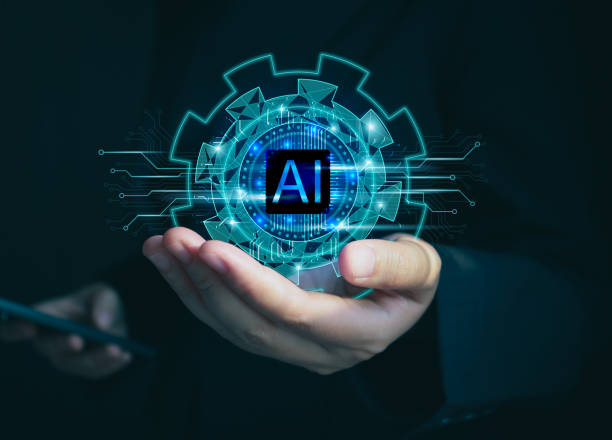
How AI robots learn and are trained
AI robots are trained through machine learning algorithms.
These algorithms enable robots to learn from data, identify patterns, and make decisions.
There are two main types of machine learning: supervised learning and unsupervised learning.
- Supervised Learning In supervised learning, the robot is trained using labeled data.
This means the data includes expected inputs and outputs.
The robot learns from this data to model the relationship between inputs and outputs. - Unsupervised Learning In unsupervised learning, the robot is trained using unlabeled data.
The robot must automatically identify patterns and structures present in the data.
In addition to these two main types, there are other types of machine learning, such as reinforcement learning and transfer learning.
The selection of the appropriate machine learning algorithm depends on the type of problem and the available data.
Google AI provides many educational resources on machine learning.
Are you worried about your e-commerce website’s low conversion rate and not achieving your desired sales?
Rasawwb is your specialized solution for a successful e-commerce website.
✅ Significant increase in conversion rate and sales
✅ Professional and user-friendly design to attract customer satisfaction
⚡ Ready for a revolution in online sales? Get a free consultation!
Security considerations in using AI robots
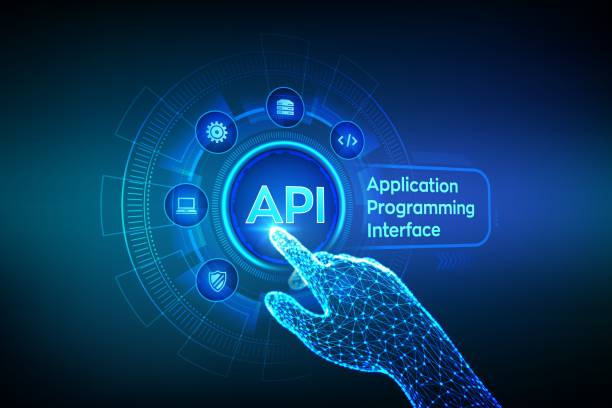
Security considerations in using AI robots
The use of AI robots comes with important security considerations.
Robots can be targeted by cyberattacks and exploited.
To prevent this, appropriate security measures must be taken.
Some of the most important security considerations in using AI robots include:
- Data Protection Robots typically collect, process, and store large amounts of data.
This data can include sensitive personal information, financial information, and commercial information.
Appropriate security measures must be taken to protect this data from unauthorized access, theft, and destruction. - Network Security Robots are usually connected to computer networks.
These networks must be protected against cyberattacks. - Software Security The robot’s software must be protected against security vulnerabilities.
This includes using secure programming methods, testing the software, and regularly updating the software. - Physical Security Robots must be protected against unauthorized physical access.
This includes the use of locks, CCTV cameras, and alarm systems.
By observing these security considerations, AI robots can be used safely and effectively.
NIST Cybersecurity provides guidelines for cybersecurity.
Leading companies in the field of AI robots
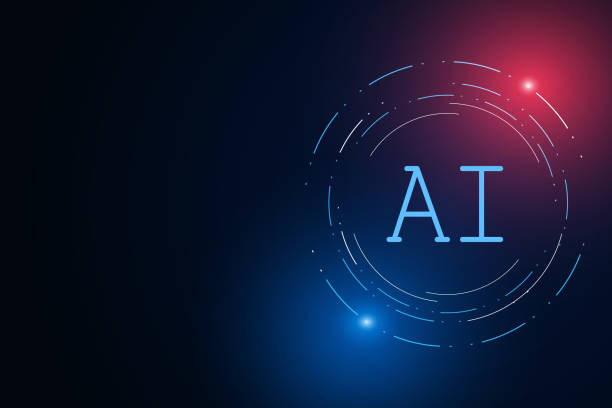
Leading companies in the field of AI robots
Currently, several companies are active in the field of AI robots.
Some of the most important of these companies include:
- Google Google has invested heavily in the development of artificial intelligence and robotics.
This company develops self-driving robots and advanced artificial intelligence systems. - Amazon Amazon uses robots in its warehouses and distribution centers and is also active in the development of home robots and voice assistants.
- Microsoft Microsoft provides artificial intelligence platforms and tools for developers and companies and is active in the development of chatbots and voice recognition systems.
- Boston Dynamics Boston Dynamics is known for building advanced and agile robots.
This company develops robots for military and industrial applications. - ABB ABB is a Swiss-Swedish company active in the production of industrial robots, automation, and electricity.
These companies are at the forefront of AI robot development and play an important role in shaping the future of this technology.
Crunchbase News provides information about startups and investments in the technology sector.
Frequently Asked Questions
| Question | Answer |
|---|---|
| What is an AI robot? | It is a robot that uses artificial intelligence capabilities to understand the environment, reason, learn, and make decisions to perform complex tasks independently. |
| What is the main difference between a regular robot and an AI robot? | AI robots can learn and adapt to their environment, while regular robots usually operate based on fixed, predetermined programming. |
| In what fields are AI robots used? | In fields such as industry (production lines), medicine (robotic surgeries), services (customer support, smart vacuum cleaners), exploration (space and underwater), and entertainment. |
| How do AI robots learn? | They acquire new skills through Machine Learning and Deep Learning algorithms, by analyzing large data sets and identifying patterns. |
| Can AI robots have emotions? | Currently, no. They can identify or simulate emotions, but they do not experience actual emotions like humans. |
| What are the main advantages of using AI robots? | Increased productivity, reduced human error, performing dangerous or repetitive tasks, and providing innovative and efficient services. |
| What challenges exist in the development of AI robots? | Need for abundant and high-quality data, complexity of algorithms, ethical issues, cybersecurity, and high research and development costs. |
| Are AI robots dangerous for humans? | No, with adherence to safe design principles and ethical regulations. Concerns are mostly related to social and economic impacts such as changes in the job market. |
| What is an example of an AI robot in daily life? | Smart robotic vacuum cleaners (like Roomba) that automatically map and clean the house, or smart voice assistants (like Siri and Alexa). |
| How is the future of AI robots predicted? | They are expected to become smarter, more autonomous, and capable of more complex interaction with humans, playing a more prominent role in industry, medicine, transportation, and daily life. |
And other services of Rasawwb advertising agency in the field of advertising
Smart Link Building: An innovative service for increasing campaign management through marketing automation.
Smart Conversion Rate Optimization: Designed for businesses looking to improve SEO ranking through precise audience targeting.
Smart Digital Advertising: A fast and efficient solution for analyzing customer behavior with a focus on attractive user interface design.
Smart Custom Software: Revolutionize SEO ranking with the help of marketing automation.
Smart Marketplace: A professional solution for digital branding with a focus on intelligent data analysis.
And over hundreds of other services in the field of internet advertising, advertising consultation, and organizational solutions
Internet Advertising | Advertising Strategy | Advertorials
Resources
Introduction to Artificial Intelligence and the Role of Robots
Applications of Smart Robots in Industry
Types of AI Robots
The Future of Robotics and Artificial Intelligence
? For your business to leap forward in the digital space, Rasawwb Aferin digital marketing agency, with expertise in SEO, targeted content marketing, and user-friendly website design, is your guide to success.
📍 Tehran, Mirdamad Street, next to Bank Markazi, Kazerun Jonubi Alley, Ramin Alley, No. 6


